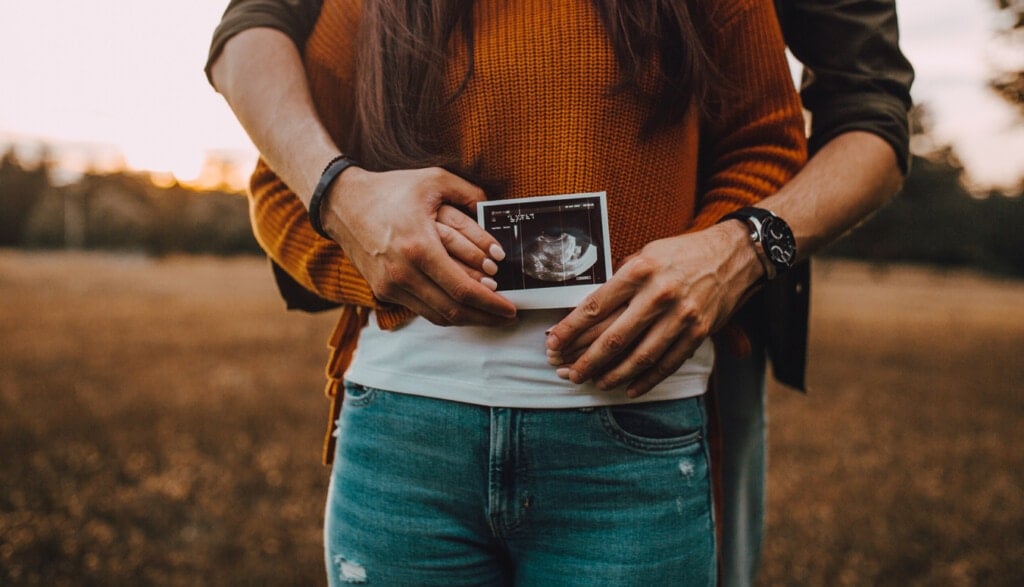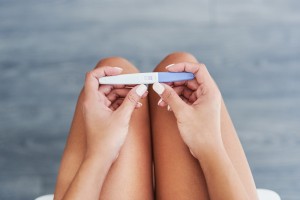Deciding to grow your family is such an exciting time! It can also bring up a lot of questions. Once you have decided to start “trying,” you may wonder how to improve your chances of getting pregnant as soon as possible. Fertility is complex, but there is a lot you can do to support your body in the miracle of making a baby and welcoming a healthy baby.
How To Make A Baby
Following these top three tips can decrease the time it takes for you to be holding your tiny human.
Tip # 1 Prepare Your Body for Pregnancy
Did you know we can decrease the time to a healthy baby by focusing on the preconception period!? It’s true! It takes 3-4 months for an egg to mature before it ovulates for the chance to be fertilized.1 During these 3-4 months, the egg quality (gene expression) is impacted by your diet, lifestyle, and overall health. Improving your health before conception decreases the time to get pregnant and affects the life-long health of your future tiny human.
We can do more than take prenatal vitamins and get off birth control. The better health you and your partner are in, the better quality egg and sperm, and the easier it will be for conception. Pregnancy is a very energy and nutrient-intensive process. If we go into it depleted, we are at increased risk of pregnancy complications, developmental concerns for the baby, and a challenging postpartum recovery.
Nutrition for Preconception
Nutrient-dense foods that support your fertility during the preconception period also build up your nutrient stores to support the baby’s development during pregnancy. Top fertility foods include:
- Shellfish
- Berries & citrus
- Nuts
- Fatty Fish
- Whole Eggs
- Colorful Vegetables
- Grass-Fed Meat
Of course, these are not the only foods you should be enjoying. But including them in a balanced diet boosts nutrients like B vitamins, choline, selenium, iodine, zinc, omega-3’s, iron, and antioxidants to support egg quality, sperm quality, and overall health.
A prenatal vitamin can help fill in the gaps of a nutrient-rich diet. But it is important to know that not all prenatal vitamins are created equal. I recommend working with a fertility dietitian to make sure you find one that is best for you. In the meantime, look for one with the following:
- At least 300 mg of choline;
- Methyl folate, which is easier for our bodies to use than synthetic folic acid;
- Iron OR calcium as they compete for absorption. Too much or too little iron impacts fertility, so knowing whether you need it is important.
The preconception period is a minimum of 3-4 months. If you have more time, 6-12 months is even better!
Tip #2 Track Your Cycle
Many women spend most of their lives trying to prevent pregnancy, creating a false sense of security that conceiving will come quickly once they are ready to start a family. Since we tend to prevent pregnancy all month long, it can feel like we can get pregnant any time we have unprotected sex. The reality is women are only fertile 2-7 days a month. Pinpointing ovulation will help you determine when this window falls for you.
Pinpointing Ovulation
Tracking your cycle with an app can be helpful, but it’s only as accurate as the information you provide. Your body gives you signs that you are fertile, which is more accurate than any app can predict.
Your cervix produces cervical mucus (CM) as you approach ovulation.2 Estrogen production increases the closer you get to ovulation, which stimulates the production of fertile CM. During your cycle, you should see a change from non-fertile CM (white/cloudy and sticky or creamy) to fertile CM (clear and stretchy or slippery). You are in your fertile window once you see the fertile type CM. In addition to predicting ovulation, CM keeps sperm alive, allows sperm to navigate to the egg, and preps it for fertilization. Once ovulation happens, you should see a transition of CM back to the non-fertile type. This change can help you determine if ovulation occurred.
If you have been tracking your cycle for a while, you may be familiar with Ovulation Predictor Kits (OPKs). OPKs test the amount of luteinizing hormone in your urine to help predict ovulation. They cannot confirm ovulation, but they can be helpful when combined with CM tracking and basal body temperature (BBT) tracking. BBT and CM can help you confirm ovulation occurred.
BBT measures how efficiently your body metabolizes carbs, fat, and protein into energy.3 When you measure and chart your BBT each morning, you will notice a clear difference between preovulatory and postovulatory temperatures. The temperature difference is due to a rise in progesterone, which has a thermogenic effect on the body (meaning it raises your temperature). This shift is preparing your body for pregnancy.
How to get an accurate BBT
You’ll need a basal body thermometer that measures two decimal places (e.g., 97.62). You can use a basic thermometer or a fertility recording tool like Tempdrop. The basic thermometers work fine if you can take your temp at the same time each morning and chart it manually (on paper or in an app). You can take your temperature orally or under your arm.
- Take your temperature first thing in the morning before you get out of bed each day, after a minimum of 5 consecutive hours of sleep.
- Leave the thermometer in place for 10 minutes before pushing the button. This assures a stable temperature reading.
- Take your temperature around the same time each morning. Our temperature rises with each additional 30 minutes of sleep.
It can take a few cycles to learn your patterns with CM and BBT and understand when your fertile window is. Once you know when you are fertile, you can time intimacy for the best chances of conception.
Timing of Intimacy
Prime baby-making time is during your fertile window. Your fertile window starts when you see fertile CM and ends after ovulation. You can use CM and BBT to confirm ovulation occurred.
Healthy sperm can survive in fertile CM for five days! This is helpful because an egg is only viable 12-24 hours after ovulation. If you have a regular cycle, being intimate on the days you see fertile mucus will increase the chances of conception.
Increase your water intake if you have trouble seeing fertile CM. If this doesn’t help CM production, seek support!
Tip #3 Seek Support Early
You don’t have to wait to seek support. It is standard practice for medical doctors to advise you to try for one year before beginning testing. Here’s the thing: this is your body and your fertility journey. If you want to wait for testing, go for it! But, if you feel like something is off, you can advocate for testing early.
If you aren’t getting the support you desire from your doctor, explore support from a midwife, Naturopathic Doctor, Fertility Dietitian, or Functional Medicine Doctor focusing on fertility. Another perspective in nourishing your fertility during the preconception period can save a lot of heartache down the road. These other healthcare professionals are trained to uncover the root causes of signs and symptoms and teach you how to work with your body to improve fertility.
Happy baby-making!!

























